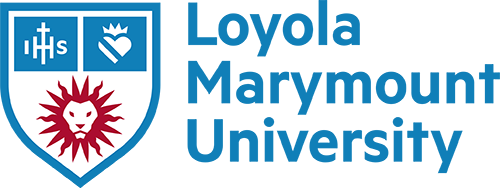
As podcasting’s popularity soars, a new elective course in the LMU College of Communication and Fine Arts’ Theatre Arts Department has provided a venue for exploring the flourishing medium. In the fall 2021 semester, 10 students learned about podcasts’ varying structures and genres and how to produce them, then developed and recorded a podcast episode of their own.
An Expanding Form of Storytelling
“Podcasting is quickly becoming a dominant form of storytelling, with a low bar to entry,” says Bruce Lemon Jr., instructor for the course. “It’s a place where people have found some amazing ways to tell stories. Given that theatre artists are complete artists, working in all kinds of media, it seemed like a good time to explore this new form of storytelling.”
Lemon, host of KPCC public radio’s live storytelling series Unheard LA, notes that while some podcasts are broadcast out of elaborate studios, many are produced at home with minimal equipment and free software. “This course was about empowering artists to grab ahold of this medium and take the leap to do it — choose a topic, give it a title, do the recording, do the editing, find the music,” he says. “I hope the takeaway for our students was that they can create something from scratch based on their own interests.”
Passion is Essential
The types of podcasts are as wide-ranging as the production levels. Lemon points out that they can be hosted by one person or co-hosted, interview-based or presented as roundtable discussions. Some adopt a documentary format, others employ narrative storytelling or are presented as podcast theatre. Some tack toward investigative journalism, others follow a straight news format. They can run as short as five minutes, or as long as three hours. Some promise a small, finite number of episodes, others continue indefinitely.
But regardless of the genre or level of production, one principle stands out as key to a podcast’s success. “It comes down to being passionate about what you’re covering,” Lemon says. “And what’s beautiful about podcasting is you can focus on something that’s really niche, and as long as it’s something you’re excited about, you can find a community that your topic speaks to.”
A Space to Try New Things
In developing their own podcasts, the course’s students had the freedom to pursue any genre and explore any topic, and the results, predictably, span a wide gamut. “The Audacity” by Brooklyn Kelly encourages listeners to become fully realized versions of their selves, unobstructed by societal expectations. In “Small Life, Big Stories,” Sammie Small interviews a friend about her experience on the reality TV show Big Brother. Tremaine Hinds adopts a comforting style to navigate difficult health issues in “Invisible Illness.” These and the other podcasts produced by students in the course benefited from peer feedback throughout the development process.
Lemon says multiple students have expressed a desire to continue putting energy into podcasting beyond the completion of the course. But regardless of whether they take it any further, he believes all of the students gained from the experience. “Podcasts are too new to box in,” Lemon says. “There’s so much space to try things. It’s important for artists to have a safe place to explore, and that’s what this course did — allowed students to take a swing at something that might be outside of their comfort zone.”



